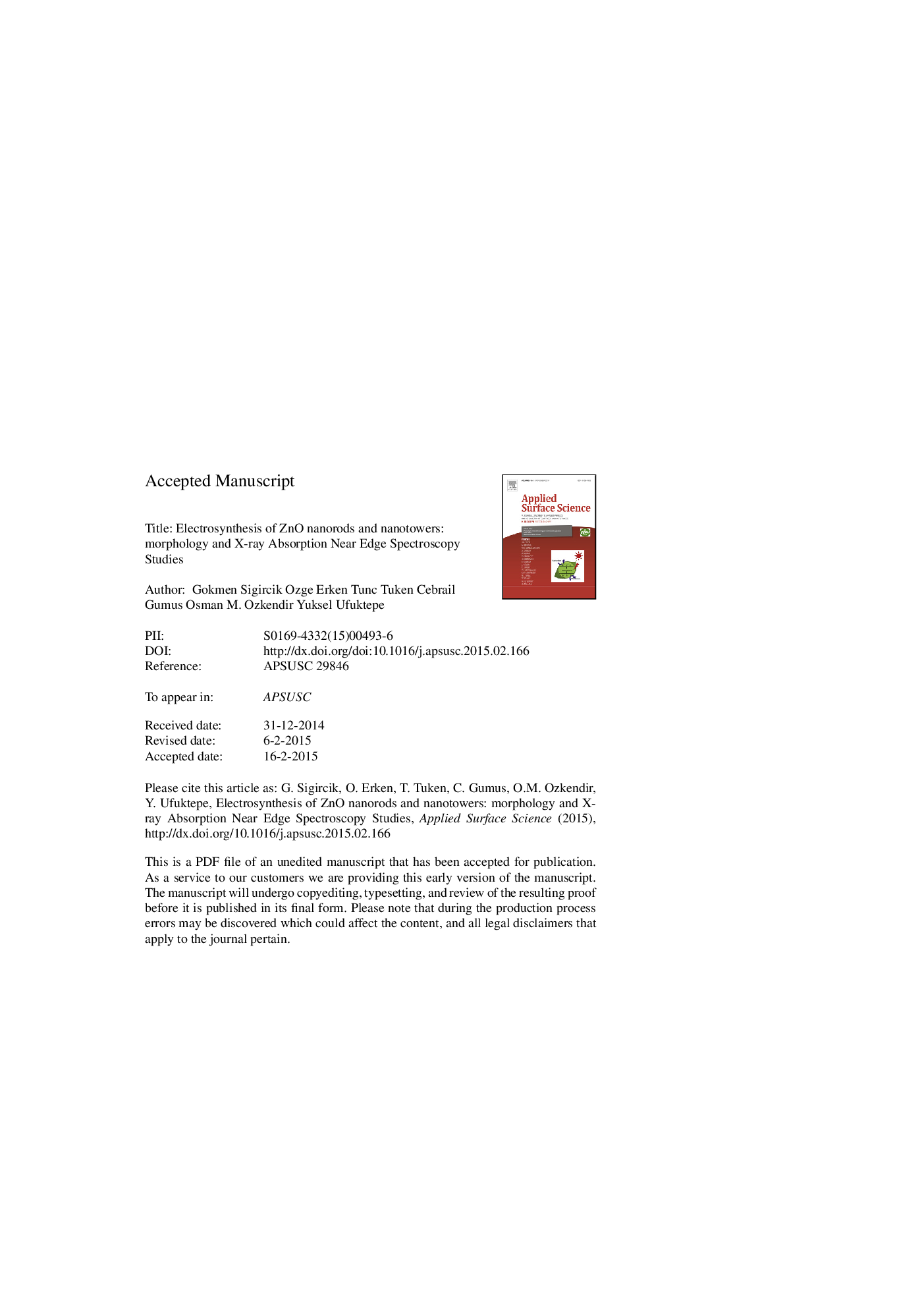| Article ID | Journal | Published Year | Pages | File Type |
|---|---|---|---|---|
| 5355524 | Applied Surface Science | 2015 | 27 Pages |
Abstract
Deposition mechanism of nano-structured ZnO films has been investigated in the absence and presence of chloride ions from aqueous solution. The resulting opto-electronic properties were interpreted extensively, using X-ray diffraction (XRD), X-ray Absorption Near Edge Spectroscopy (XANES), field emission scanning electron microscopy (FE-SEM), UV-Visible spectroscopy and four probe techniques. The ZnO deposition is mass transport controlled process and the interaction of chloride ions with the surface has great influence on diffusion kinetics, considering the substantial species (Zn2+ and OHâ) involved in the construction of ZnO film. This effect does not change major lattice parameters, as shown with detailed analysis of XRD data. However, the texture coefficient (Tc) (0Â 0Â 2) value is higher in presence of chloride ions containing synthesis solution which gave vertically aligned, well defined and uniformly dispersed nanorods structure. The calculated Eg values are in the range 3.28-3.41Â eV and 3.22-3.31Â eV for ZnO nanorods and nanotowers synthesized at different deposition periods, respectively. Furthermore, the charge mobility values regarding the deposition periods were measured to be in the ranges from 130.4 to 449.2Â cm2Â Vâ1Â sâ1 and 126.2 to 204.7Â cm2Â Vâ1Â sâ1 for nanorods and nanotowers, respectively. From XANES results, it was shown that the Zn K-edge spectrum is dominated by the transition of Zn 1s core electrons into the unoccupied Zn 4p states of the conduction band. Comparing the rod and tower nano-structured ZnO thin films, the excitation behavior of valence band electrons is different. Moreover, the density states of Zn 4p are higher for ZnO nanorods.
Keywords
Related Topics
Physical Sciences and Engineering
Chemistry
Physical and Theoretical Chemistry
Authors
Gokmen Sigircik, Ozge Erken, Tunc Tuken, Cebrail Gumus, Osman M. Ozkendir, Yuksel Ufuktepe,
